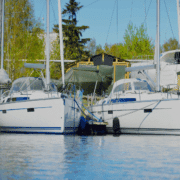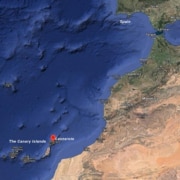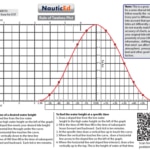Docking a Sailboat Requires a Plan
Here’s a couple of good docking stories and also see below for a great animation on how to dock a sailboat in a tight space in the marina.
If you like this story please LIKE it on facebook. Thanks it really helps us grow and in this case helps prevent people from damaging theirs and other’s boats.
How to Successfully Dock a Sailboat
Yesterday I was out at the marina and decided to do a pump out of the holding tank. I was on the boat by myself. The pump out dock was at the south end of the marina on a tee head and the wind was blowing stiffly out of the north. This means that the boat would be pushed away from the dock so that docking by myself would be a challenge. A challenge in the sense that while it’s easy to get up next to the dock, getting off the boat and getting her tied up was the hard part. A plan was needed – see below for how this incident turned out.
In St. Lucia, the Caribbean, last year I witnessed the worst docking of my life performed by a self-proclaimed experienced sailor. A sailor that claimed he sailed from the channel from Martinique to St. Lucia every weekend bar two the previous year. Well maybe he was a good sailing sailor – but the worst docker of all time – and so that makes him a poor sailor. I mean a really bad one.
Here’s what happen in St. Lucia. This boat with 6 crew and the skipper was wanting to come up to the fuel dock. There was plenty of room – maybe 3 boat lengths. It was a similar situation whereby the wind was blowing off the dock. It’s hard to describe the tangle he put himself into but it involved having to push him away from hitting the two boats (one mine) at the dock. Everyone on the docked boats were pulling out fenders trying to stop this guy from banging everyone up. The guy had no plan and no idea what to do – proof was that none of the crew even had a line in their hand. When I asked him to organize a shore-line to toss to us, he himself left the helm and pulled an old doused tangled spinnaker halyard out of a bucket which was badly coiled and now full of knots in his panic. One crew member scrabbled around eventually and found a line tied it on with a knot I’d never seen before and tossed it. Unfortunately, it was only 6 feet long and barely made the dangle into the water.
On shore, we all grabbed our own supply of dock lines to toss. When we tossed them to the boat still about 20 feet out (which was as close as the skipper could get the boat to the dock without serious damage) the crew just hung on to the lines and expected to be able to hold the boat against the wind rather than cleating them down so that the lines could be cinched up.
You know, at NauticEd we are glad that people need training – that’s our business and we are good at it. But this guy was in serious need of training WITH A BOAT, was a self-proclaimed sailor and was crossing 30 mile channels with inexperienced crew in the ocean – you know that dangerous non-breathable media called water.
After the calamity, I walked over and offered my hand – expecting a few thanks at least for the help and directing an onshore crew to help. Instead, I got a talk about how he is the master of the area and felt like the docking was successful. Steam was pouring out of the other boat’s crews. I gave him my card and even an offer of a free Maneuvering Under Power course and I offered it in the nicest mild mannered way possible. I even used third party sales technique so that it would not be an affront to him personally like “You know it looks like your crew could use a few tips – look this course over for free and if it’s appropriate we can sort something out for them”. Till now I have never seen him sign into our system. This guy is going to continue to embarrass himself (albeit unknowingly) and endanger his boat his crew and others and there is going to be a lot of gel coat on harbor bottoms throughout the Caribbean. What went wrong? There was no plan!
So what does a good plan entail? It should involve a thorough preparation for the maneuver AND all other possible issues.
- Miles out from the harbor, when you have plenty of time, use the local marina guidebook to study the harbor. Study the layout, the depths throughout, the tide height, the entrance, the approach buoys (are you IALA-A or IALA-B), the docks. Where is the customs office, water dock, fuel dock, grocery store and restaurants etc? Learn the harbor masters VHF channel if it is offered.
- Discuss with the crew the needs for the boat and make a marina visitation plan – e.g. length of stay, who goes to the grocery store, who stays with the boat to help fuel-up water-up who takes out the trash yakety yak. Are we staying for lunch etc.
Side note: You are the facilitator of the crew having a good time on THEIR vacation – you are NOT the boat nazi with a need for an ego stroke. People follow a good leader and a good plan. See our Bareboat Charter Course on being a good leader.
- Call the harbor master on VHF and announce your desire and plans – e.g. Would like to check into customs, visit the fuel and water dock, then dock up for 3 hour stay. Listen to the harbor masters instructions.
- Often times you don’t have the luxury of a nice friendly harbor master to give easy instructions and you have to make it up. But at least you are armed with a previously studied layout of the harbor.
- Discuss a docking plan with the crew. This involves lines and fenders. It’s important to get lines tied on both sides of the boat as a contingency plan. The last thing you want is a line scramble at the last minute in a tight windy marina with a flustered crew who tend to tie bad knots whilst in a panic. Use long lines as dock lines – obvious, see below.
- Fenders – the crew needs to know the appropriate fender knot (usually a clove hitch). Before you get to the dock, you don’t know the height of the dock relative to the boat so the fenders will need to be adjusted before the final “kiss”. Or it’s even possible that they may need to be moved to the other side at the last minute. There should be at least one (or two) roving fender with a crew member assigned to manage it. A roving fender is a loose fender with a line to be used should there be close quarters, the fender can be used to protect both boats. BIG POINT – make sure all crew (including kids who are desperate at all times to help) that arms and legs are NOT to be used to push the boat away from other boats or docks. A boat-boat crunch is better that a boat-arm-boat crunch.
- Appoint crew members to each dock station, forward and aft. Ensure those crew members know how to coil and throw a line – obvious but not many people know how to properly and effectively do this. As a docking helms person, you cringe when you need that line ashore and you see it thrown poorly missing the mark. These skills are taught as a game whilst under sail out in the ocean.
- Appoint an able bodied person to step ashore and take the lines. Explain the order of tying off. They need to know that trying to hold the boat against the wind is not possible. If you’re coming in forwards then usually you want the forward line tied first to a dock cleat aft of the bow. This help stop the boat and can save you from exchanging $100 for gel coat repairs to the forward boat. Thus explain this carefully and clearly. “The first thing to do when you get off is to catch the forward line and get it cleated as fast as possible to the dock at a position backward from the bow of the boat to stop the boat moving forward. Then get the aft line cleated. Don’t worry too much about getting it prefect just get them cleated. We can all tighten them up later but the priority is to get the boat cleated.”
Each docking maneuver requires a different plan. For example a Mediterranean mooring requires the boat back up to the dock. Different wind directions and force require a different order of things. The important thing to do is have a plan and have the crew understand the plan.
In your minds eye, visualize the whole maneuver way prior to starting it when you have no distractions. Think about each crew members abilities, the wind, current, what could go wrong. Visualize the lines being thrown and everything. Try to predict any weaknesses through your visualization.
So what happened with my docking maneuver yesterday?
I’m going to admit it. My plan had a flaw in it, and I initially failed, but I survived. The flaw was that I did not have long enough dock-lines. Being by myself, I needed to get off the boat with both forward and aft dock lines in hand so that I could control both ends of the boat at the same time.
Here’s how it worked the second time – successfully. Away from the dock I cleated a long forward line and brought it back (outside of everything) to the cockpit. I cleated a long aft line and coiled it next to the forward line. I motored the boat at 45 degrees towards the dock at a place at where I wanted the stern to end up. About 5 feet out, I turned the boat sideways to the dock and engaged reverse to stop the boat. This bought the boat side to the dock nicely but I still had the wind to contend with blowing me away from the dock. The reason for the 45 degree point is that you get some dock-ways momentum which gets your final position closer to the dock. If you come in flat and parallel to the dock, by the time you get to your stopping position, you’ll always be too far away to step off because of the wind. After stopping, moving quickly, I stepped out of the cockpit with both forward and aft lines in hand. I stepped off the boat and went forward to cleat the front of the boat. The long aft line allowed me to keep the aft line in hand whilst I quickly cleated the forward line. By this time the stern had blown away a little but not much. I ran back and cleated the aft. I was able to just pull the stern around. Had the wind been higher or the boat bigger I would have been able to use a spring technique shown in the animation to bring in the stern with the engine. That’s why I put on the forward line first.
Pretty simple you might say but I wanted to point out that having a plan makes success. My first pretty poorly planned maneuver failed me. It came from having the luxury of a crew, once one variable changed the viable planned became a failure. I’d failed to visualize the whole maneuver. I’d not visualized how I would prevent the stern of the boat being blown downwind.
Docking is where ALL the damage happens. Become an excellent docker. Our Maneuvering Under Power course is probably the best course in the world on teaching how to effectively dock a boat.
Take the NauticEd Manevuering Under Power course now!
Here’s an animation of how to bring the boat into a side-to dock with wind blowing you off the dock and tight quarters.










